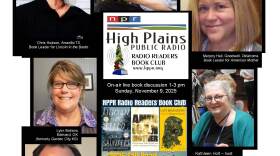To understand the nature of these conflicts and possible resolutions, I asked myself, “How did our country get to this point?” I then remembered a book that describes our history over the last five centuries. The title of the book is: “1493.” - by Charles C. Mann. In “1493,” Mann relies on the work of archeologists, botanists, and others to describe the global changes after Columbus arrived in the Caribbean Islands in 1492. Those changes are known as the Columbian Exchange.
Mann describes Columbus’ voyage as stitching together the continents that drifted apart millions of years ago and the humans who later occupied them. He writes that Columbus’ arrival was not the discovery of a new world, but the creation of a new single world. He lists an array of events, statistics, and observations that emerged during the Exchange. Some are jaw-dropping, others obvious, but unspoken.
Mann explains that during the Exchange Europeans exported their plants and beasts of labor and returned with silver and a variety of food crops. Resources from islands off the coast of Peru were excavated and shipped to Europe to fertilize its exhausted soil. The Exchange included diseases, among them, smallpox, influenza, measles, tuberculosis, and syphilis. During the Exchange, the Western Hemisphere lost 75% of its population to disease.
Wealthy Spanish and English monarchs and merchants initially financed expeditions to reach China and its trade. 1n 1607, England sent an expedition to establish a post on America’s northern Atlantic coast. Their intent was to have the post, later named Jamestown, become England’s gateway to China and a wealth-generating world market. But Jamestown lay in swampy lowlands and the water supply was contaminated with disease. Crop yields were meager, their hunting and fishing skills limited, and the winter cold exceedingly harsh. Mann reports that between 1607-1624, England sent 7,000 people to Virginia, 80 % of them died. Similarly, in two expeditions, Scotland sent 4,500 individuals to Panama. Within two years the settlement failed and only 700 returned.
With continents blocking passage to China, the Europeans turned to mining gold and silver. In the 1600s, Spain mined the world’s largest silver deposit in Bolivia and became the world’s wealthiest nation. The uninvited Spanish also brought weaponry to defend themselves and their treasure. Mann describes in horrifying detail how the Spanish quickly imposed Europe's model for wealth and empire, the enslavement of men, women and children to serve as the subservient labor force for the wealthy few.
Columbus brought no women on his expedition and his men took Indigenous women, with or without consent or formal marriage. By 1520, the first Mestizos, children of European and Indigenous blood, were born. Today, in the U.S., the descendants of the Mestizo, whatever the blood degree or country of birth, are considered Mexicans.
Virginia’s most profitable venture was tobacco. Columbus brought a tobacco to Europe described by Mann as “exotic, intoxicating, and addictive.” Tobacco became an expensive craze for Europe’s wealthy. In response, tobacco quickly became Virginia’s primary crop for profit. Initially, English indentured servants provided the field labor. When African slaves were brought to Virginia in 1619, it became apparent that Africans better withstood Virginia’s diseases. Consequently, the demand for African slaves grew rapidly.
Remnants of Spain’s and England’s practice of maintaining a lower skilled, less educated, and poorly paid class of laborers persists today. Race and skin color remain a primary determinant of placement into the subservient class.
Our society’s challenge today is to live the new millennium serving the well-being of all humankind on our increasingly-connected planet.
The name of the book is 1493. I’m Dennis Garcia for the HPPR’s Readers Book Club.









